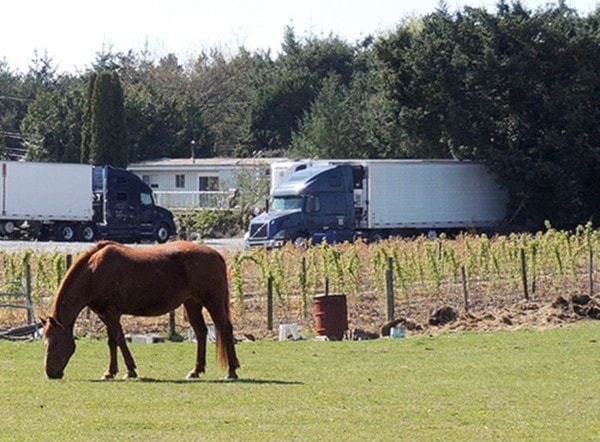Hundreds of Abbotsford property owners are breaking rules over how they can use agricultural land, a new report for the city reveals.
Around 400 properties in the Agricultural Land Reserve (ALR) contravene city and provincial land use rules, according the first report compiled for the city’s AgRefresh review of its farmland policies and bylaws.
Those parcels constitute nearly nine per cent of all ALR properties in Abbotsford, according to the draft background research report, which was presented to council’s agriculture committee earlier this month.
Some had multiple contraventions, with around 500 rule breaches detected.
Of those, the most common were unapproved secondary dwellings, which constituted 42 per cent of the illegal land uses. Agriculture properties are allowed to have multiple homes if they are being used for the homes of a farmer or retired farmer, for immediate family member, or for farm employees, although local governments have the final say in whether the latter reason is justified.
Nearly a quarter of the contraventions saw properties being used to store goods without authorization. Commercial truck parking was taking place on dozens of properties, comprising 14 per cent of the total. And soil deposit and removal was not allowed, but taking place, on around 50 properties.
Elsewhere, the report notes that unauthorized soil deposits are increasing, and that the parking of trucks reduces the viability of farmland on agricultural properties.
A 2014 aerial photo was used to detect unauthorized uses, and the report notes that the assessment only covered a single point in time.
Of the contraventions, more than half – 55 per cent – took place in Abbotsford’s southwest sector, to the south of Highway 1 and west of Highway 11. The rest were spread between the other agricultural areas, with Bradner-Mount Lehman seeing 21 per cent of all illegal activities, Sumas Prairie the location of 15 per cent, and Matsqui Prairie home to nine per cent.
The next step of the AgRefresh process will see more data analysis “to understand the magnitude of potential contraventions.” That will include determining if the rule-breaking is a result of active non-compliance or outdated and/or unclear polices.
The third stage will see the city develop a strategy to address the problems found and conduct day-to-day enforcement of bylaw and agricultural rules.
The report also touches on several problems raised in The News’ ongoing Under Pressure series on challenges to the city’s agricultural land base, with comprises three-quarters of its territory.
The report has made its way to several City of Abbotsford committees. It will be addressed by council in early October, at which time staff will likely be asked to start the second stage of the AgRefresh process, which will focus on more public engagement.

